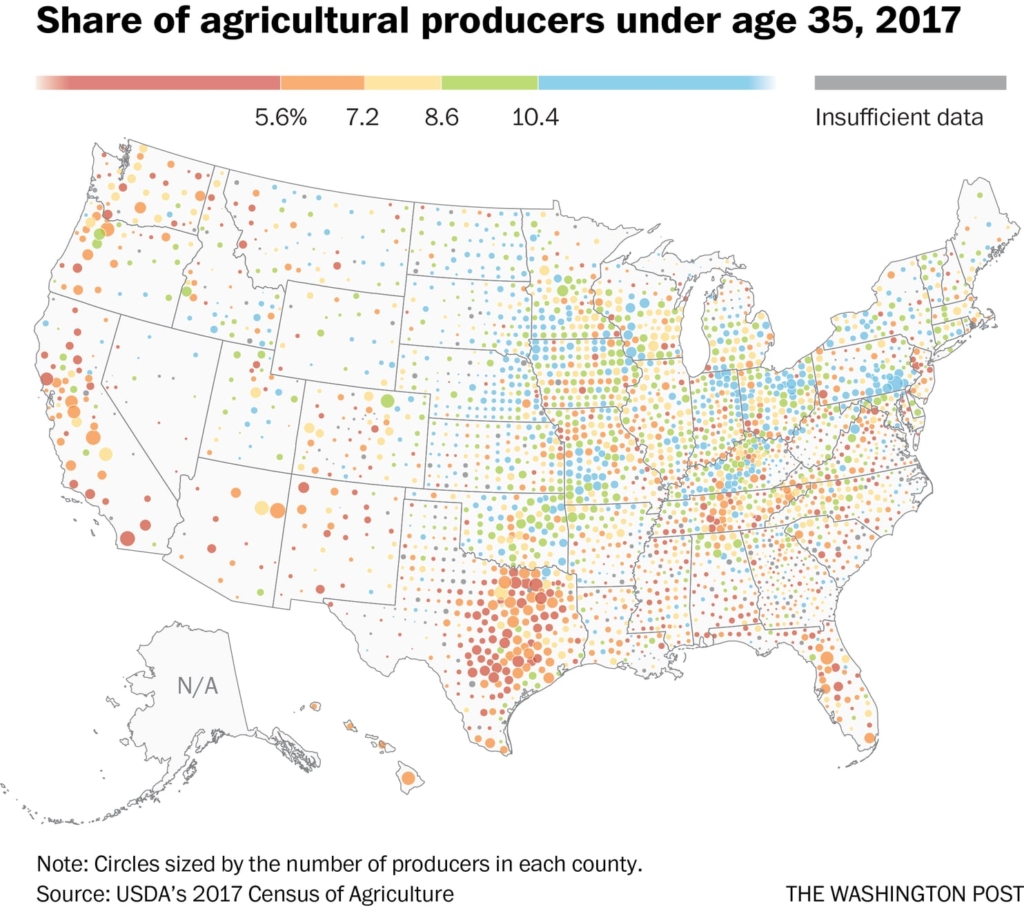Advocates hoped U.S. census would find diversity in agriculture, but it found old white people – “We have seen a 30-year decline in almost every single metric”

By Laura Reiley and Andrew Van Dam
13 April 2019
(The Washington Post) – The Agriculture Department’s newly released 2017 Census of Agriculture is 820 pages of graphs, tables and puzzling shifts (half as many llamas but the number of minks rose toward 1 million). This census comes out every five years and is the most accurate and detailed look at America’s vast, complicated and shrinking agricultural sector.
Its data is used by those who serve farmers and rural communities — but it also shows who farms and what challenges they face. Those challenges, farmers and their advocates say, are legion.
A central theme of this census appears to be a hollowing out of the middle: All categories of midsize farms declined over the past five years. Farmer’s ages skewed older, leaving questions about what happens when they age out.
“We’re not going to suddenly attract 40-year-olds,” said Jeff Tripician, president of Perdue Premium Meat, the parent company of beef, lamb and pork producer Niman Ranch. “We have seen a 30-year decline in almost every single metric. They’re all bad. The number of jobs lost, the average net income down 45 percent since 2013. There’s no news here. It’s an acceleration of bad. What have we done to fix this?” […]
“As farmers age out and retire,” Sophie Ackoff of the National Young Farmers Coalition, a nonprofit that advocates for young farmers, “we’re not adding enough new farmers to make up for it. That’s why we need to focus on technical service and loans and grant programs. We need younger farmers to succeed because there aren’t enough of them.” [more]
Advocates hoped census would find diversity in agriculture. It found old white people.